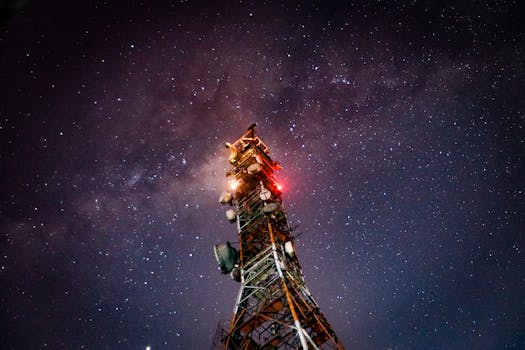
MEO Satellites: Revolutionizing Global Connectivity with Medium Earth Orbit Technology
MEO satellites, or Medium Earth Orbit satellites, are a type of satellite that operates in an orbit between 2,000 and 36,000 kilometers above the Earth’s surface. This orbit is significantly lower than the Geostationary Orbit (GEO) used by traditional communications satellites, which are located approximately 36,000 kilometers above the equator. The lower orbit of MEO satellites allows for faster and more reliable connections, making them an attractive option for a wide range of applications, including telecommunications, navigation, and Earth observation.
The use of MEO satellites is becoming increasingly popular due to their ability to provide global coverage with fewer satellites than traditional GEO systems. This is because MEO satellites have a higher elevation angle and can see more of the Earth’s surface, allowing for more efficient use of satellite resources. Additionally, MEO satellites have lower latency than GEO satellites, which is critical for applications that require real-time communication, such as video conferencing and online gaming.
How MEO Satellites Work
MEO satellites use a combination of advanced technologies to provide fast and reliable connections. They are equipped with high-gain antennas that allow them to communicate with Earth stations and other satellites, and they use advanced modulation and coding techniques to maximize data throughput. MEO satellites also use propulsion systems to maintain their orbit and ensure that they remain in the correct position to provide continuous coverage.
One of the key benefits of MEO satellites is their ability to provide global coverage with a smaller number of satellites than traditional GEO systems. This is because MEO satellites have a higher elevation angle and can see more of the Earth’s surface, allowing for more efficient use of satellite resources. Additionally, MEO satellites have lower latency than GEO satellites, which is critical for applications that require real-time communication.
Applications of MEO Satellites
MEO satellites have a wide range of applications, including telecommunications, navigation, and Earth observation. They are used to provide broadband internet access to remote and underserved communities, and they are also used to support critical infrastructure, such as emergency response systems and financial networks. MEO satellites are also used for navigation, providing location information and timing signals to a wide range of users, including aviation, maritime, and land-based transportation systems.
In addition to these applications, MEO satellites are also used for Earth observation, providing high-resolution images of the Earth’s surface and atmosphere. This information is used for a wide range of purposes, including weather forecasting, climate monitoring, and natural resource management. MEO satellites are also used for scientific research, providing valuable insights into the Earth’s atmosphere, oceans, and land surfaces.
Benefits of MEO Satellites
The use of MEO satellites offers a number of benefits, including faster and more reliable connections, global coverage with fewer satellites, and lower latency than traditional GEO systems. MEO satellites are also more resistant to interference and jamming, making them a more secure option for critical communications. Additionally, MEO satellites are more cost-effective than traditional GEO systems, requiring fewer satellites and less infrastructure to provide global coverage.
In conclusion, MEO satellites are revolutionizing the way we communicate globally, offering faster and more reliable connections than traditional GEO satellites. With their ability to provide global coverage with fewer satellites, lower latency, and higher elevation angles, MEO satellites are an attractive option for a wide range of applications, including telecommunications, navigation, and Earth observation. As the demand for global connectivity continues to grow, the use of MEO satellites is likely to play an increasingly important role in meeting this demand.
